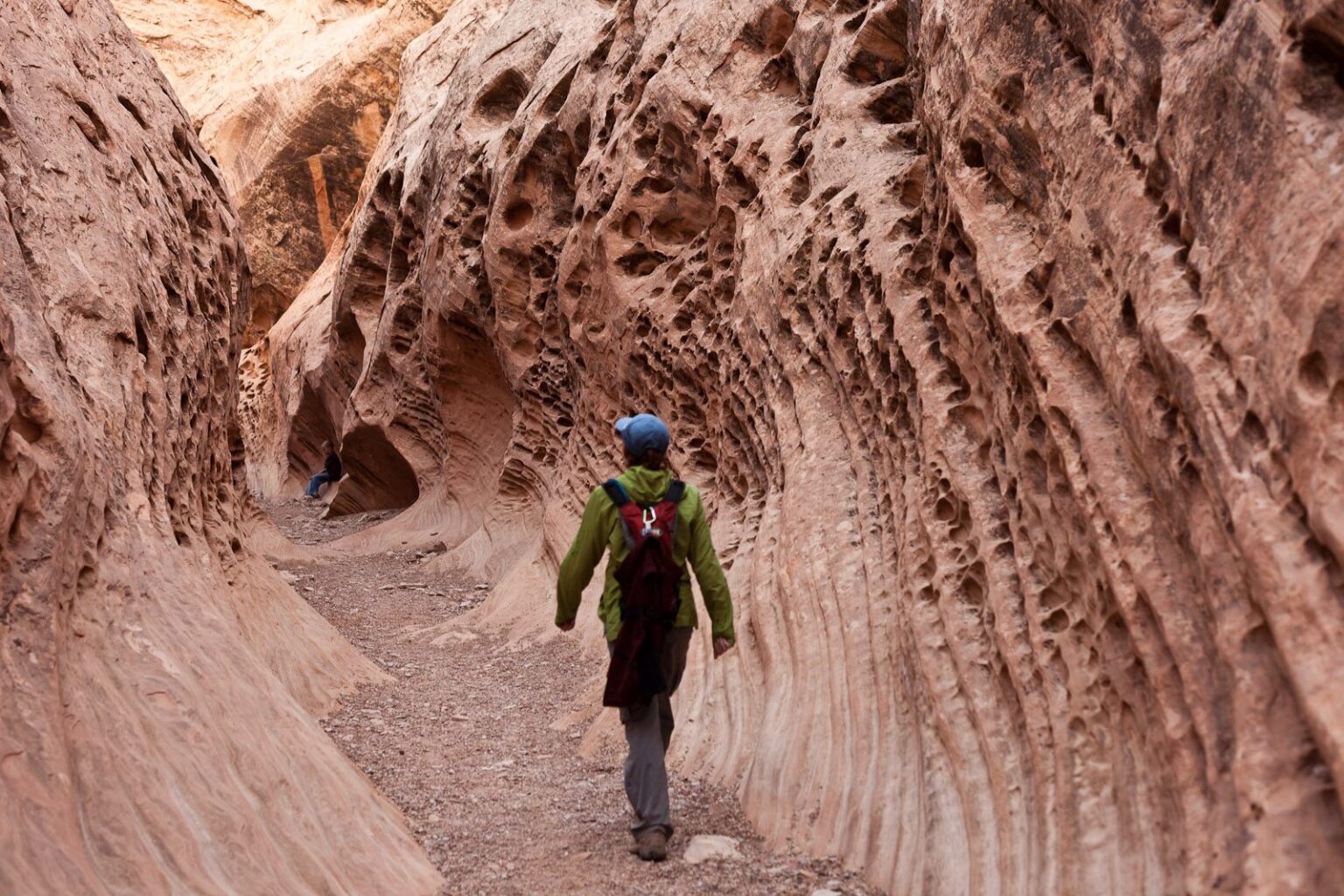Are you ready to embark on an exhilarating journey through the rugged beauty of dry canyons? Imagine navigating the twists and turns of arid landscapes where the silence of the canyons amplifies the thrill of adventure. This Guide is your roadmap to mastering this lesser-known but equally thrilling sibling of water canyoning. But what does it take to conquer these desolate yet majestic terrains?
Dry canyoning is an art that requires agility, awareness, and the right techniques. It’s about exploring the untouched slots and ridges that water has carved over millennia—except you’re doing it without the current beneath you. This guide is crafted to equip you with the essentials: from the gear that will be your ally to the skills that will ensure your safety and enhance your enjoyment of the sport.

Dry Canyoning – Key Takeaways
☑️ What distinguishes dry canyoning from wet canyoning? Dry canyoning involves navigating through arid canyon landscapes without the presence of water, focusing on climbing and hiking, while wet canyoning includes water navigation like swimming and wading.
☑️ How should one prepare for a dry canyoning adventure? Plan during the drier seasons for optimal conditions, and ensure you have the right gear, including specialized canyoneering backpacks, footwear, helmets, and ropes.
☑️ What safety measures are crucial for dry canyoning? Always check weather forecasts, understand the terrain, carry emergency gear, and consider hiring a certified guide for enhanced safety and expertise.
☑️ Where are some top locations for dry canyoning? Notable spots in the US include Zion National Park in Utah and Antelope Canyon in Arizona, while global destinations like Sierra de Guara in Spain offer unique experiences.
Exploring the Canyons: Dry vs. Wet
The Landscape of Dry Canyons
Dry canyons offer a unique terrain that you simply must experience. The dry canyon landscapes are marked by their breathtaking rock formations, lack of water, and sometimes secret canyon passages waiting to be explored. Unlike wet canyons, where water temperatures can dictate your route, dry canyons often present more accessible canyons to traverse. The absence of water allows the true beauty of the geological formations to stand out. Think of grand arches, intricate rock patterns, and the freedom to explore without getting wet! Are you intrigued by the secrets hidden in these remarkable landscapes?
Wet Canyons vs. Dry Canyons
Now, let’s consider the other side of the coin. Wet canyons, as the name implies, involve traversing through areas filled with water. But how do they compare to dry canyons? Well, wet canyons often require navigation through varying water temperatures and depths, making the journey more aquatic and sometimes even chillier!
Wet canyons may offer stunning reflections, a splash of fun, and the excitement of swimming or wading. On the other hand, dry canyons provide a clean, arid experience, where the focus is on climbing, rappelling, and hiking through rugged terrains.
Here’s a quick comparison to help you visualize the differences:
| Aspect | Dry Canyons | Wet Canyons |
|---|---|---|
| Accessibility | Often more accessible; no need for swimming or special water equipment | May require swimming or specialized water gear; accessibility varies with water levels |
| Landscapes | Intricate rock formations; absence of water reveals hidden geological wonders | Water features like pools, waterfalls, and rivers; landscapes change with water flow |
| Navigation | Focus on land navigation; climbing and hiking skills crucial | Emphasis on water navigation; swimming, rappelling, and water safety skills needed |
| Experience | Offers a clean canyoneering experience with focus on rocks and terrain | A more aquatic experience with possible dips in water, can feel more adventurous |
| Ideal Seasons | Generally accessible year-round; less dependent on weather conditions | Best explored in seasons with suitable water temperatures; weather and water conditions must be considered |
So, whether it’s the secret canyon allure of dry landscapes or the refreshing splash of wet canyons, both offer their unique experiences. Ready to choose your adventure?
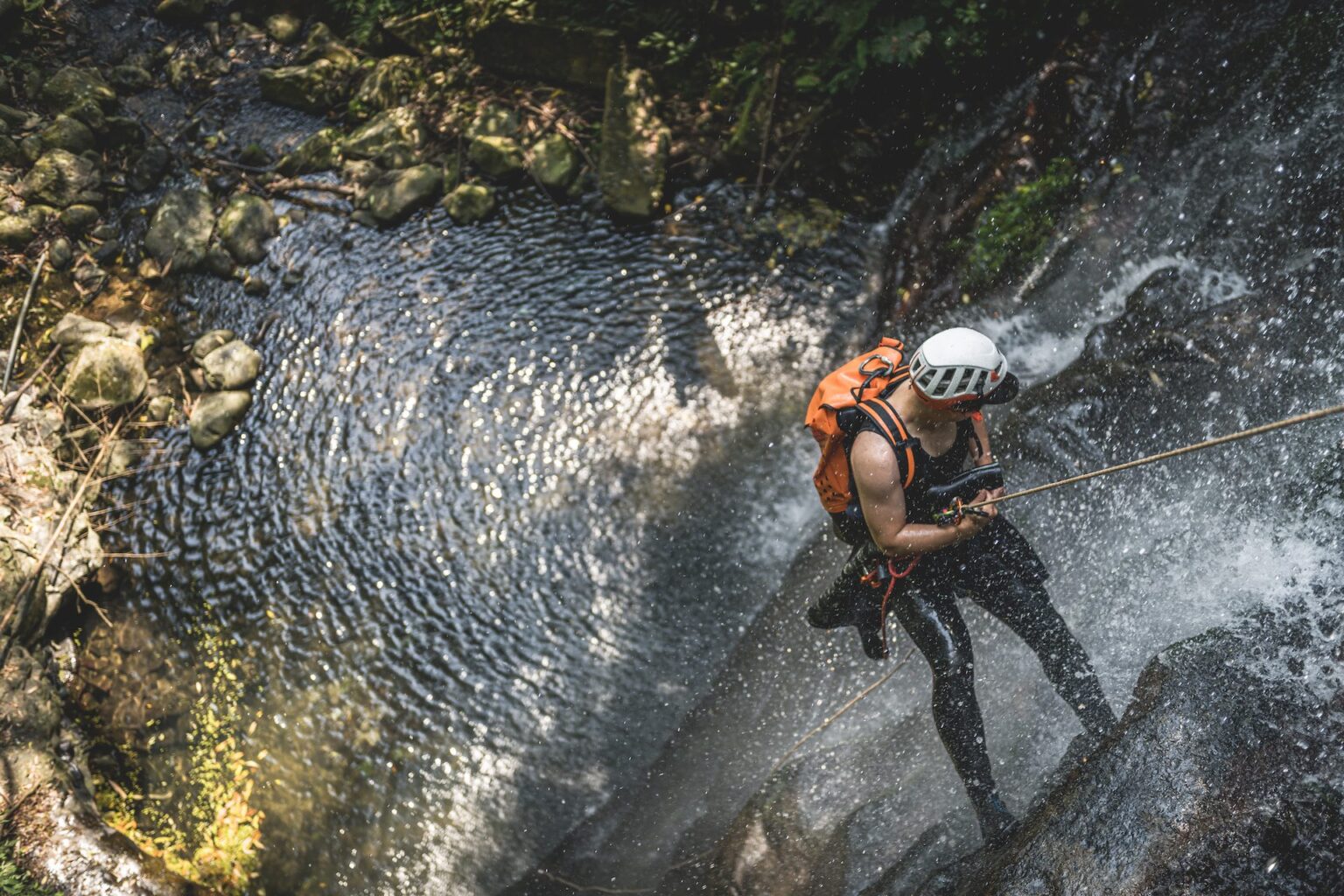
Key Locations for Dry Canyoning
Best Locations for Dry Canyoning in the US
Looking for an unforgettable adventure day trip in the heart of the USA? Embrace the rugged terrains and enjoy a clean canyoneering experience at these must-visit locations:
- Utah: Zion National Park: Famous for its towering sandstone cliffs, this park is a dry canyoneering paradise. Navigate through the narrow passages and marvel at the majestic rock formations.
- Arizona: Antelope Canyon: Antelope Canyon’s unique wave-like structures and light beams are a photographer’s dream. What better place for an unscripted adventure?
- California: Death Valley: Known for its arid climate, Death Valley offers an unparalleled dry canyoneering experience, with vast desert landscapes and hidden canyons waiting to be explored. Check out the 5 BEST Death Valley National Park Canyons.
- Colorado: Ouray: Ready for a combination of climbing and hiking? Ouray’s breathtaking views and versatile terrain make it a perfect destination.
Now, how do these places become dry canyoning hotspots? The lack of water, combined with the rugged, complex geological features, sets the stage for a clean and thrilling experience. That’s what makes these destinations a must-visit for your dry canyoning escapade.
Best Global Hotspots for Dry Canyoning
But wait, the dry canyoning adventure doesn’t stop within the USA. Incredible global hotspots are waiting for you to explore:
- Spain: Sierra de Guara: Famed for its limestone formations, Sierra de Guara is Europe’s dry canyoning capital. Grab your gear and set off on a journey through the intriguing landscapes.
- France: Verdon Gorge: With its emerald-green river and towering cliffs, Verdon Gorge is a must-visit. Though known for wet canyoneering, its dry sections offer a unique exploration opportunity.
- Australia: Claustral Canyon: Hidden in the Blue Mountains, Claustral Canyon offers a combination of narrow passages and grand vistas. It’s an adventure waiting to be had!
So, why did we pick these locations? The attributes of dry canyons, such as intricate rock formations, accessibility, and the sheer thrill of exploring uncharted terrains, influence the selection of these key locations. Whether it’s the USA locations or international hotspots, they all present a unique canvas for your dry canyoneering adventure.
Why not take the plunge and embark on an unscripted adventure in one of these dry canyoning paradises? Whether you’re a beginner or an expert, these key locations promise an experience you’ll never forget.
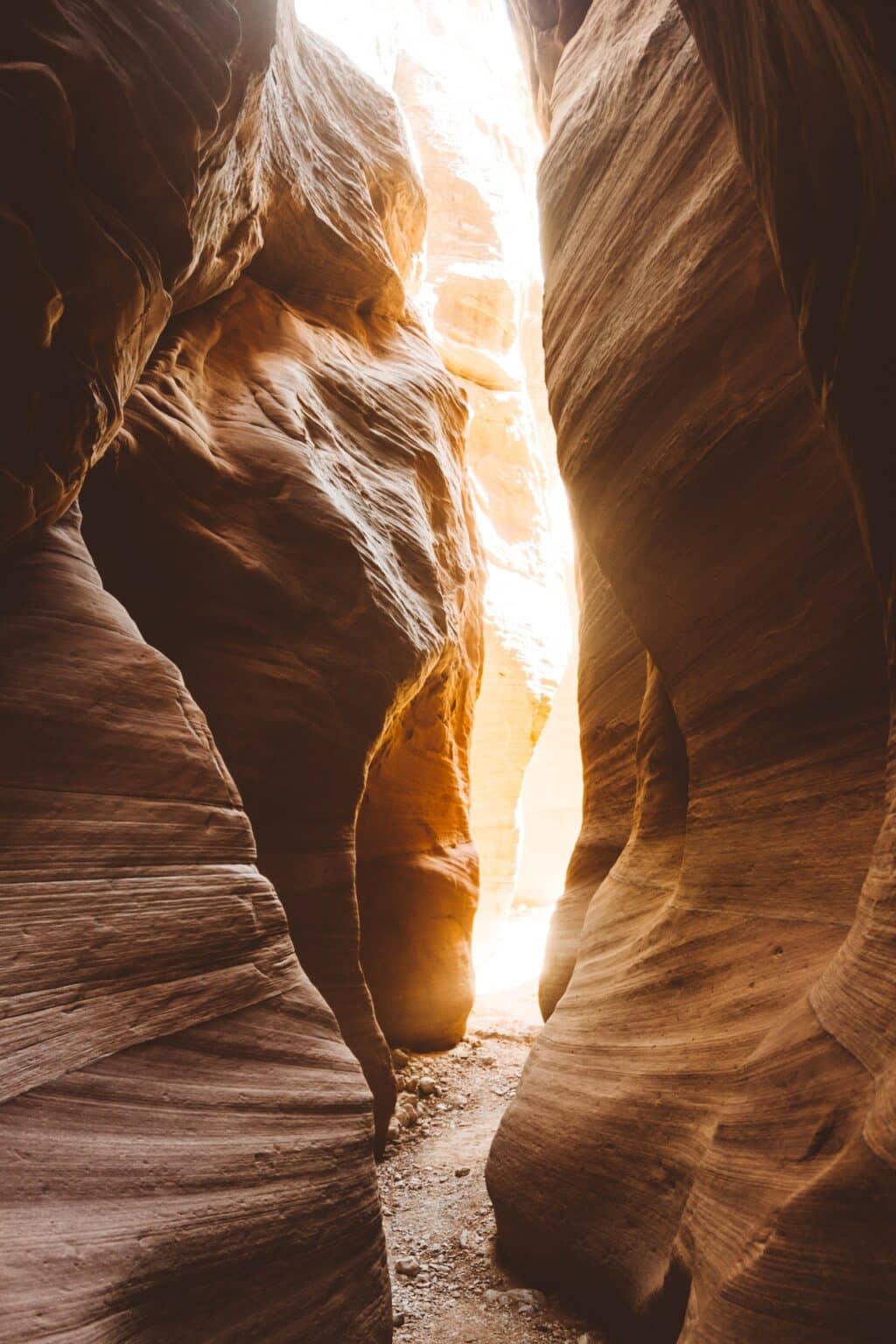
The Dry Canyoning Experience
Planning and Preparing
You’re all set to embark on a dry canyoning adventure? Thrilling! Now that you’ve discovered some top-notch locations, the next step is all about planning and preparing. When is the best time to visit? That varies from place to place. But here’s a tip: steering clear of wet seasons usually guarantees a genuine dry canyoning adventure. It’s not just about choosing a location; it’s about understanding the unique characteristics of each canyon. With careful planning, you can transform this into an unforgettable journey. Are you ready to dive in?
Got your gear ready? Have you checked the weather? You’re almost there!
During the Adventure
Now, let’s consider the adventure itself. Imagine this: You’re standing at the edge of a canyon, and ahead lies an unknown path. Navigating routes, finding your way through narrow passages, and the occasional encounter with a bit of water—this is what dry canyoning is all about! Your heart beats faster as you scramble over rocks, squeeze through tight spaces, and marvel at the ever-changing landscape. The wind whispers ancient secrets in your ear, and the earth beneath your feet feels like uncharted territory. What’s around the next bend? Only one way to find out! So, grab your gear and let the canyon’s call guide you to an adventure you’ll cherish forever.
After the Experience
Wow, what an adventure! But what now? Reflection is essential. How did the chosen location shape your experience? Did the absence of water add to the thrill, or did you miss the splash of wet canyons? Preserve those memories through photos, a journal, or even a vlog. Relive the memories and, who knows, maybe plan the next trip?
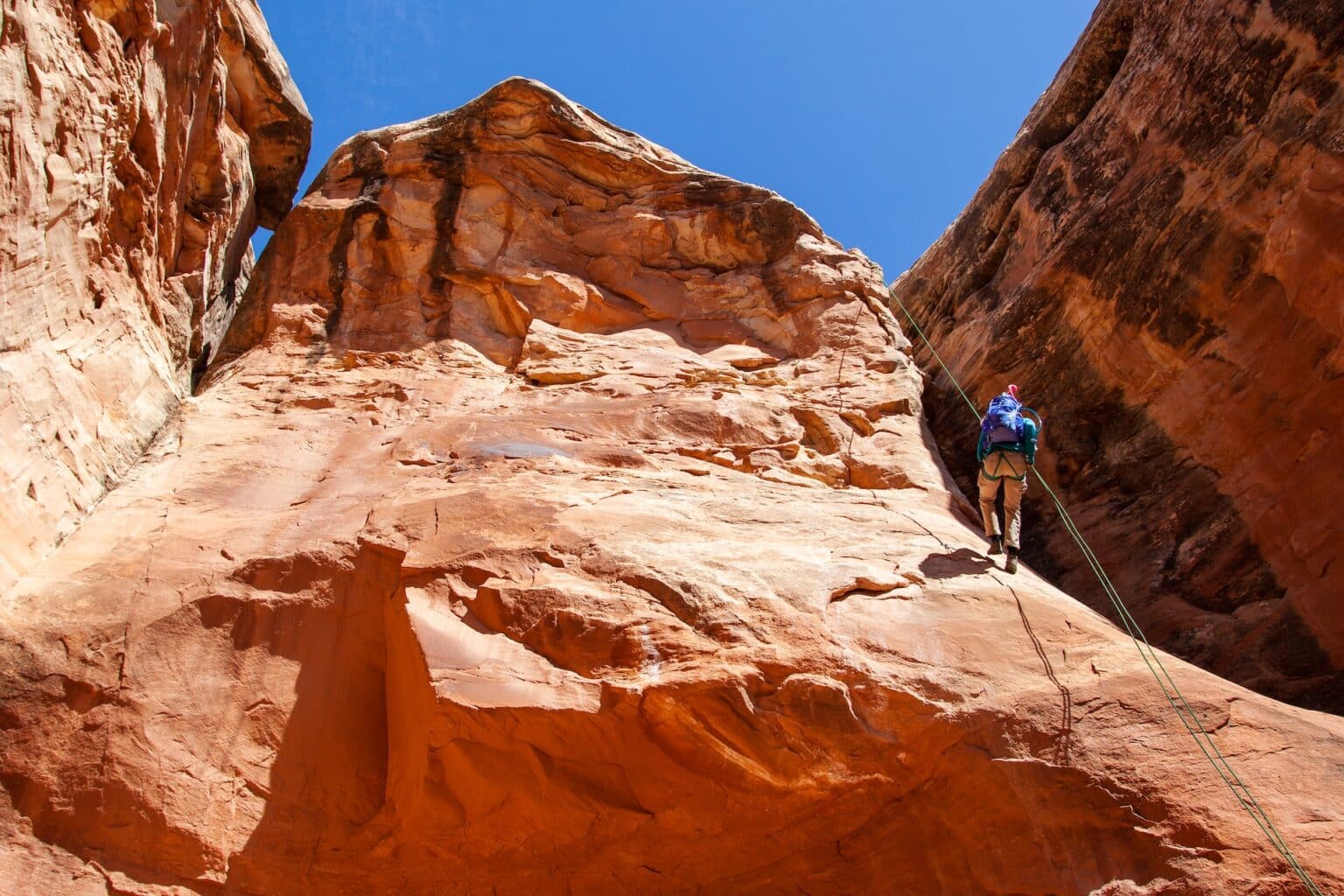
Essential Equipment
Embarking on a dry canyoning expedition without the right gear? Unthinkable! Your essential equipment is a lifeline in the rugged terrains of a canyon. So, what do you need?
- Backpacks for Canyoneering: These are not your regular backpacks. They’re designed to carry all your essential tools and still be comfortable enough for long treks.
- Footwear: Specialized canyoneering shoes to provide grip and protection.
- Helmet: Safety first! A helmet to protect against unexpected bumps.
- Ropes and Hardware: Including harnesses and carabiners, these are vital for those descents and climbs.
- Gloves: Protect those hands!
- First Aid Kit: Because accidents can happen.
- Navigation Tools: Maps, compass, or GPS. Getting lost isn’t an option.
Believe it or not, every single piece of this equipment plays a crucial role. Imagine forgetting your ropes or choosing the wrong backpack for canyoneering. A disaster, right?
But worry not, with proper gear, your adventure will not just be safer but also more enjoyable. After all, dry canyoning is about immersing in the experience, not fretting over what you forgot to pack!
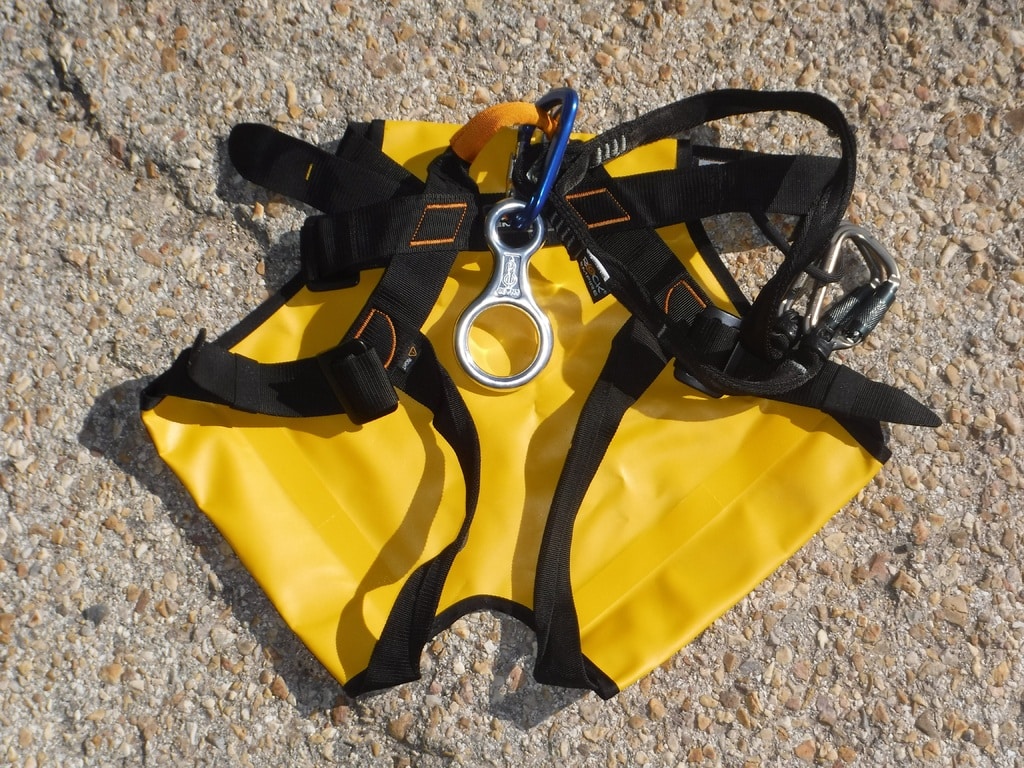
Safety Measures
General Precautions
Safety isn’t just a word; it’s a pledge when it comes to dry canyoning! For safety reasons, never venture into a canyon without first checking the weather and understanding the terrain. Carry the right emergency gear, and stay connected with someone who knows your whereabouts. A well-thought-out plan might seem tedious, but it’s your shield in the wild.
The Role of a Certified Guide
ACA-certified canyoneering guides are trained to turn a risky adventure into an exhilarating yet safe experience. Their expertise goes beyond merely showing you the way. They have your back, watching out for potential risks and ensuring that all safety gear is properly used. They know the terrain, the secret spots, and more importantly, they know safety inside out. Consider a certified guide not as an option but as a vital part of your adventure. Remember, in the canyons, the smallest misstep can lead to a big problem. Stay safe; hire a professional!
Environmental Considerations and Ethics
Isn’t the untouched beauty of the canyons part of what draws us to them? The wild landscapes beckon, but we must heed the call responsibly. Embracing the Leave No Trace principles is not just ethical; it’s essential. Imagine stepping into a canyon marred by litter or damaged vegetation. It’s not the same, is it? By respecting nature, keeping trails, and taking all trash with us, we preserve these magnificent places for future adventurers. Our choices truely make a difference. Adventure responsibly, preserve the beauty, and let the canyons remain a secret untouched by human recklessness.
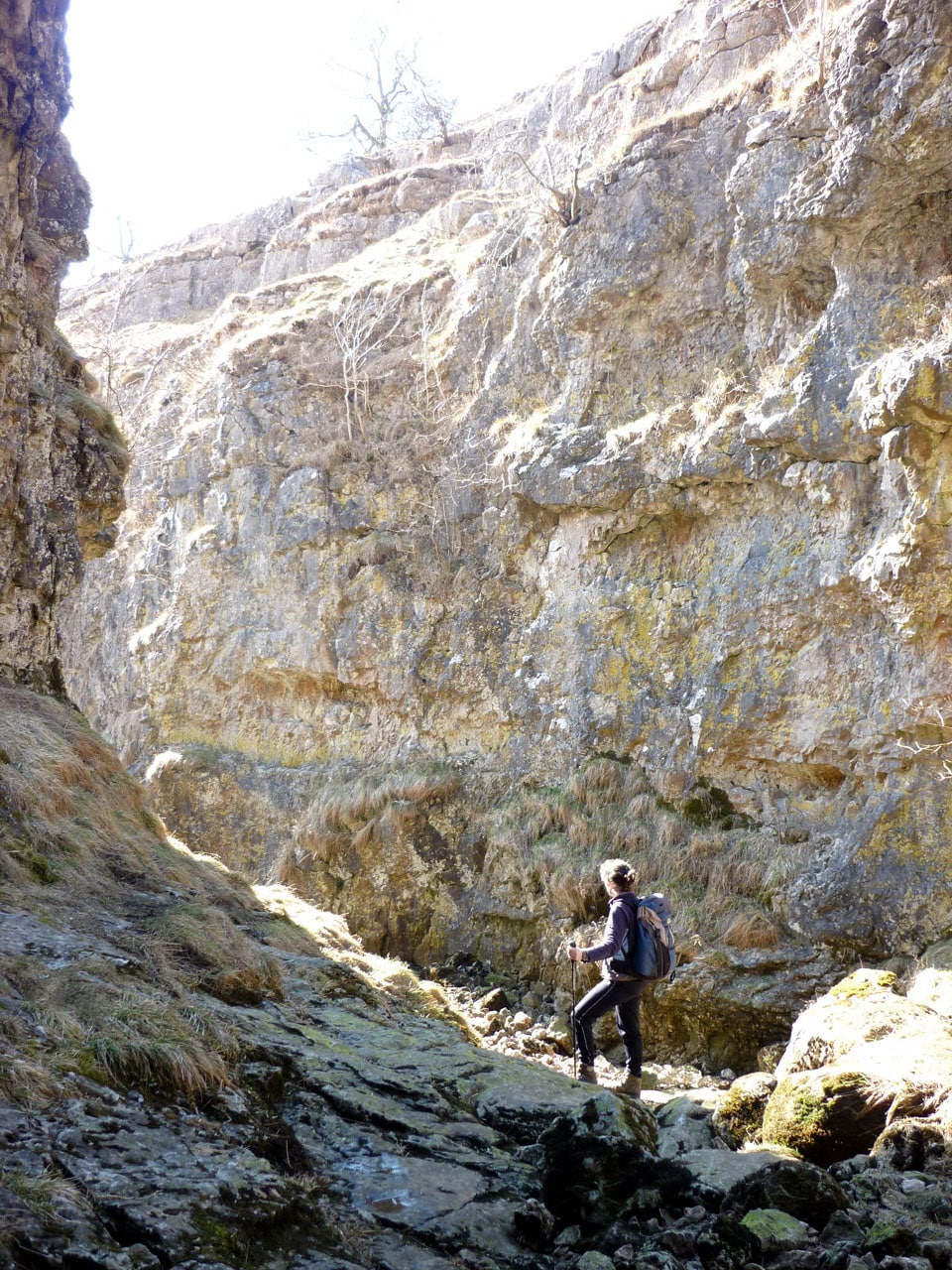
“The upper part of Trollers Gill“, by Karl and Ali, licensed under CC BY-SA 2.0
Other Related Activities
Thinking about venturing beyond dry canyoning? The world of adventure doesn’t stop at the canyon’s edge. Consider diving into water sports in aquatic canyons or exploring the thrilling twists of canyon rivers. Can you believe that some of the equipment you’ve gathered for dry canyoning can also be your gateway to these exhilarating experiences? That’s right! The same ropes, harnesses, and certain safety gear can be your ticket to a new adventure. And don’t you just love when things work out like that? From the gentle sway of a canoe to the pulse-pounding rush of white-water rafting, your next unscripted adventure awaits.
Frequently Asked Questions
What is the difference between dry canyoning and wet canyoning?
Dry canyoning refers to exploring canyons where water is scarce, while wet canyoning is all about navigating canyons filled with water. It’s a choice between arid beauty and watery excitement!
How do I choose the right equipment for dry canyoning?
Choosing the right equipment is vital! Look for specific gear like backpacks for canyoneering, safety harnesses, and proper footwear. Need more details? Check our Essential Equipment section.
Is a guide necessary for dry canyoning?
A guide isn’t always necessary, but a canyoneering guide can enhance safety and enrich the experience. It’s all about what you feel comfortable with!
What are the main safety considerations for dry canyoning?
Safety first! Key considerations include understanding safety gear, following general precautions, and considering the role of a certified guide. Want to dig deeper? The Safety Measures section has you covered!
What is the difference between canyoning and canyoneering?
There’s no distinction between the terms “Canyoning” and “Canyoneering”; they refer to the same activity! It’s merely a matter of cultural terminology: “Canyoning” is the preferred term globally, while “Canyoneering” is particularly favored within the United States.
Conclusion
And there you have it, the complete guide to dry canyoning! From understanding the thrilling contrast between dry and wet canyons to choosing the perfect locations, planning your trip, and ensuring safety with the right equipment – we’ve covered it all. Now, let’s consider your next adventure. How about diving into the mesmerizing landscapes of dry canyons and embracing an unscripted adventure? Whether you’re an experienced explorer or just starting, dry canyoning has something extraordinary to offer. So why wait? Grab your gear and embark on the dry canyoning journey of a lifetime. Adventure awaits!

